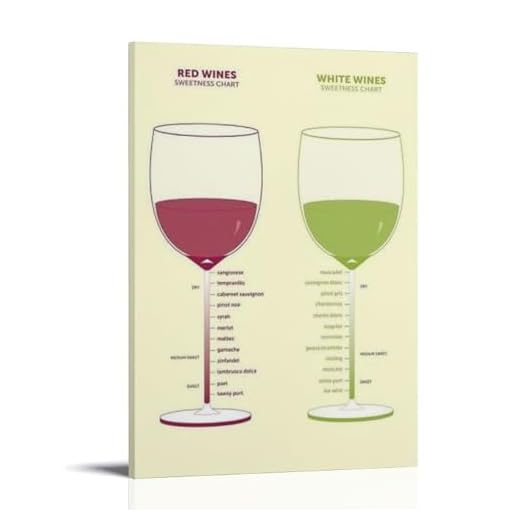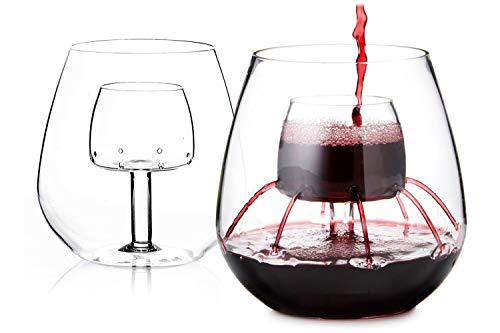



In a typical 750ml container of fermented grape beverage, you can expect approximately 1 to 3 grams of natural grape-derived sweetness per serving. This amount is primarily influenced by the fermentation process and the choice of grape varietals. For connoisseurs seeking to balance flavor profiles, this subtle sweetness can enhance the overall tasting experience.
When pairing this liquid with various culinary delights, it’s crucial to consider the impact of its natural sugars on the palate. The hint of sweetness can complement savory dishes or balance out spicy elements. If you’re monitoring sugar intake, it’s advisable to enjoy in moderation, given that the residual sweetness can contribute to the overall caloric content.
Exploring the nuances of this drink can reveal how different styles and regions influence sugar levels. Whether you prefer something bold and fruit-forward or more restrained and earthy, understanding the residual sweetness will elevate your appreciation and enjoyment of this classic beverage.
Understanding Sugar Content in Red Wine
The level of residual sweetness in fermented grape juice varies significantly across different styles. Typically, a standard 750ml container of this beverage may contain anywhere from 0.1 to 1.0 grams of sweetness per liter for dry varieties, while sweeter options can reach upwards of 20 grams. For those monitoring intake, it’s critical to check the specific wine type.
For instance, a full-bodied Cabernet Sauvignon often has less sweetness compared to a fruity Pinot Noir. The fermentation process converts most of the natural fructose into alcohol, but some sweetness can remain, influencing the overall taste profile.
To better understand the sweetness levels, consider the following table that categorizes different types and their typical sugar content:
| Wine Type | Typical Residual Sweetness (grams per liter) |
|---|---|
| Dry | 0.1 – 1.0 |
| Off-Dry | 1.0 – 5.0 |
| Semi-Sweet | 5.0 – 20.0 |
| Sweet | 20.0+ |
When selecting a variety, consider the pairing with food, as a higher sweetness can complement spicy dishes or desserts, while drier selections may enhance savory flavors. Always check the label for specifics, as producers vary in their approach and style.
For those keen on tracking dietary intake, be mindful of the cumulative effect across multiple servings. Enjoying this beverage in moderation while being aware of its sweetness profile can elevate both the tasting experience and overall enjoyment.
Factors Influencing Sugar Levels in Wine
Fermentation is a key factor. The yeast converts the natural fructose present in grapes into alcohol. The duration and temperature of fermentation can significantly impact the residual sweetness. Cooler temperatures often result in higher sugar retention, while warmer conditions encourage complete fermentation.
Grape variety plays a vital role as well. Some cultivars, like Cabernet Sauvignon, typically have lower residual levels compared to others such as Zinfandel, which may retain more sweetness. The ripeness of the grapes at harvest also affects the sugar content; riper grapes contain more fructose.
Winemaking techniques are critical. Methods such as stopping fermentation early can preserve more natural sugars. Additionally, the use of additives like concentrated grape juice can elevate sweetness levels in the final product.
Climate influences grape maturation. Regions with warmer climates often produce grapes that develop higher sugar concentrations due to prolonged sunlight exposure. Conversely, cooler climates may yield grapes with lower natural sweetness.
Lastly, aging processes can modify perceived sweetness. Extended barrel aging might impart flavors that enhance the overall experience, leading to a perception of sweetness even if the actual residual content remains constant.
Comparing Dry vs. Sweet Varietals
For those seeking a flavorful experience, understanding the distinctions between dry and sweet options is crucial. Typically, dry selections contain under 1 gram of residual sweetness per liter, while sweet varieties can exceed 30 grams. This stark difference directly impacts the tasting notes and food pairing opportunities. For instance, dry selections often exhibit earthy tones, tannins, and acidity, making them ideal companions for savory dishes like grilled meats or rich pasta sauces.
Flavor Profiles
Dry options tend to be more robust, featuring notes of dark fruits like blackberry and plum, often complemented by spice and oak. Sweet varieties, on the other hand, are characterized by their luscious fruit flavors, such as cherry or raspberry, and may include hints of chocolate or vanilla. This sweetness can be delightful with desserts or spicy cuisine, enhancing the overall dining experience.
Choosing Based on Preference
Your personal taste plays a significant role in selecting between these two categories. If you enjoy a bold, tannic profile, opt for dry selections. Conversely, if you prefer a smoother, sweeter palate, look for options with higher residual sweetness. Both styles have their place in various occasions, so exploring a range can lead to enjoyable discoveries.
Measuring Sugar in a 750ml Bottle
When assessing the sweetness level of a 750ml container, you can expect anywhere from 0 to 30 grams of residual sweetness. Dry varieties typically contain less than 5 grams, while sweeter selections can reach upwards of 20 grams or more. For an accurate measure, consult the label or reach out to the producer.
To quantify this content, use a refractometer or hydrometer, which can determine the specific gravity and sugar levels during the fermentation process. If you’re tasting at home, focus on the mouthfeel and finish, as these characteristics can indicate higher sweetness, even if the number isn’t explicitly stated.
Pairing choices can also influence your perception. Opt for dishes that contrast sweetness, enhancing your experience and allowing you to appreciate the depth of flavors in each sip.
Ultimately, understanding the sweetness profile not only enhances appreciation but also guides food pairings and personal preferences. Seek out wines that align with your palate, and don’t hesitate to ask for assistance in identifying those that best fit your taste.
Health Implications of Sugar in Red Wine
The amount of residual sweetness in fermented grape beverage can influence various health aspects. Moderation is key. The American Heart Association recommends limiting added sugars to no more than 6 teaspoons for women and 9 teaspoons for men daily. While the natural sweetness from fermentation differs, it is essential to monitor your overall intake.
Potential Benefits
- Moderate consumption may improve cardiovascular health due to antioxidants found in fermented grape beverages.
- Some studies suggest a correlation between moderate intake and reduced risk of certain diseases, including type 2 diabetes.
Health Risks
- Excessive consumption can lead to weight gain and obesity, increasing the risk of heart disease and diabetes.
- Individuals sensitive to glucose may experience spikes in blood sugar levels, leading to health complications.
- High-calorie content from sugars may contribute to dental issues.
It’s essential to choose wisely. Opt for varieties with lower sweetness levels if you’re concerned about health implications. Always consult with a healthcare professional for personalized advice.
Choosing Low-Sugar Red Wine Options
Opt for varietals like Cabernet Sauvignon, Pinot Noir, and Merlot; these tend to have lower residual sweetness. Look for wines labeled as “dry,” which typically indicate minimal left-over grape sweetness after fermentation.
Check the alcohol content; higher ABV often correlates with lower levels of sweetness. Wines over 14% alcohol usually undergo complete fermentation, leading to drier profiles.
Explore regions known for producing less sweet options, such as Bordeaux or Napa Valley. These areas focus on crafting complex, dry wines that cater to those seeking less sugary experiences.
Consider the producer’s style; many wineries focus on minimal intervention and natural fermentation processes, which can result in lower sweetness. Seek out brands that emphasize dry styles in their portfolios.
Utilize online resources and reviews to find specific recommendations on lower sweetness options. Engage with wine communities for personal insights and suggestions on hidden gems.
For those preparing meals, pairing a low-sweet varietal with dishes can enhance flavors. For example, a robust Cabernet can complement grilled meats beautifully.
Lastly, if you’re curious about culinary timing, check out this how long does it take to cook field peas link for meal prep insights that can pair well with your wine choices.









